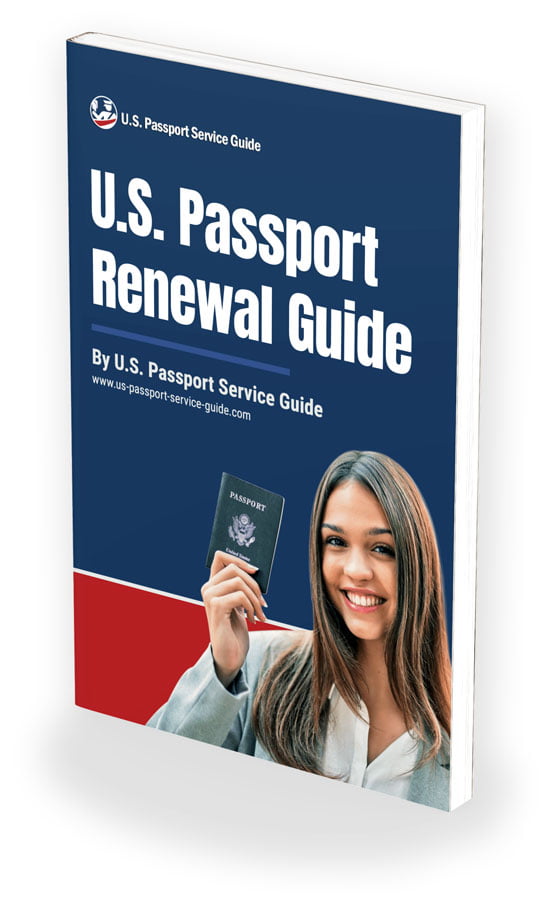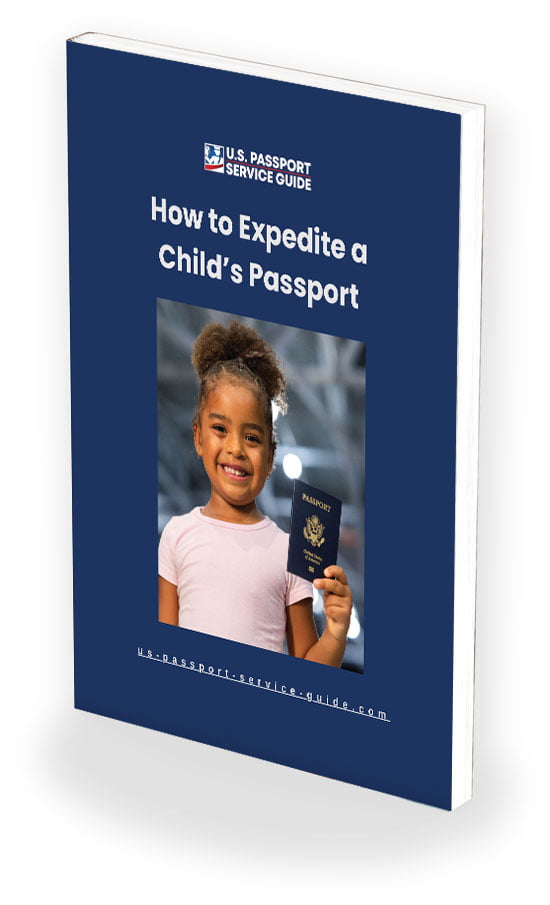Unfortunately, passports are made from materials that are prone to mold growth. A moldy passport, if bad enough, can result in enough damage that your passport is invalid for international travel.
Mold can flourish on various components of a passport, including the binding materials, paper pages, polycarbonate coatings, and even the ink. Mold is made worse in conditions that are damp, dark, and/or humid.
To help both prevent and solve this issue, this all-inclusive guide delves into the reasons behind mold growth on passports, pinpoints different types of mold, investigates the health hazards linked with exposure, and presents a detailed procedure for safely removing mold from passports.
Even with proper preventative care, mold happens. Follow our valuable advice below for assessing if and when it’s necessary to replace a passport that has been severely damaged by mold.
If you realize your passport is damaged beyond saving and you have urgent travel plans, consider using a reputable passport expediting service to quickly replace your passport. You can also check out our complete, step-by-step guide to replacing a damaged passport.
✈️ Need Your Passport Fast?
Traveling soon? Get your passport in as little as 24 hours with our trusted expedited service. Or choose Priority Service for delivery in just 7–9 business days — now with 15% off.
Understanding Passport Materials
Remember, mold requires moisture to grow. While passports are made of materials designed to protect the pages from damage, those same materials can potentially harbor mold under wet conditions.
Passports are made with four different types of materials, all of which are susceptible to mold growth:
- Binding material that holds your passport pages and covers together
- Paper pages inside the passport
- Polycarbonate coating of the information page
- Ink from printing and your own personal, handwritten information
Causes of Mold Accumulation on Passports
Various situations can cause mold to grow on a passport.
- Improper passport storage – Storing your passport in an airtight container like an airtight lockbox or a place that lacks proper ventilation, like a zip lock bag, can expose a passport to damp or humid conditions. Even the smallest particle of water can get trapped in an airtight container and breed mold.
- Climate – Living in or traveling to wet or humid environments can expose your passport to moisture and potentially cause mold to grow.
- It gets wet – Basically, any situation in which your passport gets wet—rain, spills, drops into water—can cause mold to grow if you do not take the proper steps to dry it out as quickly as possible.
Identifying Types of Mold on Passports
Mold can grow on a variety of surfaces. Here are the types of mold that can grow on passports:
- Cladosporium: A common type of mold that typically grows on paper, it appears in clusters of spots in black, yellow, or green. These spots can spread quickly.
- Penicillium: A common mold that typically grows indoors. This mold may appear as brown, black, or green spots.
- Aspergillus: A mold that generally grows indoors and can be identified by its fuzzy appearance.
- Stachybotrys: Also known as “black mold,” it can appear shiny and slimy when active and growing but powdery, like soot, when dry.
- Chaetomium: Another mold that has a fuzzy appearance, this type of mold typically grows in masses. It starts as a white growth that darkens over time.
- Trichoderma: Commonly found on organic materials, this type has a bright green color and grows rapidly in clusters.
- Fusarium: This mold has a woolly, cotton-like appearance that ranges between white, cream, tan, yellow, pink, red, and purple. This type of mold spreads quickly.
A Moldy Passport Causes Multiple Problems
It is important for you to understand that mold, of any type, can cause harm not only to your passport but to your health and the health of your loved ones. It must be taken seriously.
Health Risks of Mold Exposure
Mold exposure can result in a range of health issues.
- Allergic reactions, such as sneezing, a runny nose, red eyes, and a skin rash, can occur immediately or be delayed.
- Asthmatics who are allergic to mold may experience triggered attacks.
- Even those without allergies can suffer from irritation in their eyes, skin, nose, throat, and lungs.
More serious health conditions can arise from exposure to certain molds that produce mycotoxins, leading to severe effects like
- acute poisoning,
- immune deficiencies,
- and even cancer.
It’s crucial to remember that research on mold and its health effects is ongoing, and the full spectrum of potential health effects related to mold exposure is not yet fully understood. If you believe you’re experiencing health problems due to mold exposure, seeking professional medical advice for proper diagnosis and treatment is essential.
Travel Issues Caused by a Moldy Passport
A passport with mold growth could pose a problem when traveling. Depending on the damage caused by mold, the passport could be deemed damaged, causing it to be invalid for international travel. This could prevent you from boarding your flight and/or crossing an international border.
If you are unsure about whether your moldy passport will pass muster at customs, err on the side of caution and get it replaced. Getting stuck at a border crossing or having to alter your travel plans is never worth the risk! With a registered passport expediting service or a trip to a regional passport agency, you may be able to get a replacement as quickly as the same day.
Step-by-Step Guide to Cleaning Mold from Passports
Safely removing mold from your passport is a simple task. By following these step-by-step instructions, you’ll get your passport cleaned and sanitized, rendering your passport not only safe to use but also valid for international travel.
Materials
Before you get started, make sure that you have the necessary materials for safely removing mold from your passport.
Personal protective equipment (PPE) should be worn whenever handling mold to limit your exposure to touching and inhaling mold spores. Please put safety first when cleaning your passport and wear:
- Rubber gloves
- Mask
- Safety glasses
Additional materials you will need to remove the mold from your passport include:
- Old newspaper
- Soft-bristled brush (e.g., toothbrush)
- Vacuum with attachment
- Soft cloth (e.g., t-shirt or thin sock)
- Disinfectant wipes with 60% alcohol
- **Mold and mildew cleaner
**Mold and mildew cleaner is as needed (per Step 5 below).
Steps to Safely Remove Mold from Your Passport
- Step 1: Dry out the passport. Place your passport in a dry place that has plenty of air circulation and low humidity. This may be a place indoors with a fan trained on the passport, or this may be outside in the sun. If you choose to place your passport outside to dry, be sure that the weather conditions are dry and not humid.
Wherever you decide, leave your passport in that place until it has completely dried out. This step is crucial as it halts the growth of mold by removing the damp environment where mold thrives.
- Step 2: Brush off the mold. Once the passport is dry, lay the passport down on an old newspaper. Gently brush off the mold using a soft-bristle brush. A soft toothbrush would do the trick. Once you’ve completed this step, fold up the old newspaper and throw it away in an outside trash can.
Be careful not to damage the passport’s pages or its important information during this step. Should any of the printed information become unreadable, you will need to follow this guide to replace your damaged passport.
- Step 3: Vacuum the passport. For this step, cover the end of a vacuum cleaner hose with a thin piece of cloth—a t-shirt or thin sock will work. This acts as a filter to prevent any damage to the passport. Carefully vacuum the passport to remove any remaining mold spores. Be sure to pay special attention to any areas previously affected by mold, even if there are no more visible spores there.
- Step 4: Disinfect the passport. Use a disinfectant wipe that contains more than 60% alcohol to clean the passport. The disinfectant helps to kill any remaining mold spores. Once you’ve gently wiped the entire passport down, you must allow the passport to dry completely (see Step 1 for proper drying tips).
Steps 1 through 4 should suffice for most mold issues. However, if the mold on your passport is stubborn, follow Step 5:
- Step 5: Apply a mildew remover. Use a specialized mold and mildew cleaner. You must follow the instructions on the product carefully to preserve the integrity of your passport. Do not spray directly onto the passport; rather, spray onto a soft cloth or paper towel and gently wipe the passport cover and pages. Once you’ve applied mold and mildew cleaner, leave the passport to dry completely (see Step 1 for proper drying tips).
Please remember that these are general passport cleaning guidelines and might not work in all mold situations. If the mold infestation is severe, it might be safer and more effective to replace your passport altogether. Again, mold can pose health risks, so always handle it with care.
When to Replace a Mold-Damaged Passport
If you’ve followed the five steps to safely remove mold from your passport and the mold damage has proven too severe to remedy on your own, it may be time to replace your passport with a new one.
Evaluating Mold Damage
The extent of mold damage on a passport can vary from a few minor spots to widespread growth that undermines the document’s integrity. If the mold has made the information and/or photo page unreadable or has caused the lamination to peel off, the damage is deemed severe. Even slight water damage leading to ink smudging or the appearance of mold spots might mark the passport as invalid for international travel. In such cases, it is time for a passport replacement.
Procedure for Replacing a Mold-Damaged Passport
If your passport has suffered severe damage, you will need to replace your damaged passport. This involves gathering all necessary documents for a damaged passport replacement application. These include:
- Proof of US citizenship,
- Passport Application Form DS-11,
- A letter detailing how your passport was damaged,
- A new passport photo,
- A photocopy of your driver’s license or other state-issued ID (both front and back), and
- The fee for replacing a damaged passport (the same as a new passport fee).
If you need to replace your passport urgently, you can always expedite the process by using one of our highly recommended passport expediting companies.
Preventing Mold Growth On Passports
Ideally, your passport will never grow mold, but since you’re here, it’s probably too late for that.
However, there are a few simple steps you can take to make sure that you are maintaining and storing your new passport correctly to avoid another battle with passport mold:
- Keep your passport dry. To prevent mold growth, it’s crucial to keep your passport dry at all times. Avoid any exposure to moisture and always store your passport in a place where humidity is low. Do not place your passport in an airtight container, but in a place that has proper ventilation.
- Use desiccants. A desiccant is a hygroscopic substance that essentially creates dry conditions within an area. For example, a silica gel pack can be used to prevent mold by absorbing moisture in the air and reducing overall humidity. Storing your passport in a location with a desiccant will prevent your passport from unwanted moisture and potential mold and mildew.
- Ensure regular air circulation. If your passport is stored in a safe, a fire-safe box, or a similar container, it’s important to open it regularly to allow ventilation. This allows air to circulate freely, preventing the buildup of humidity and reducing the chances of mold growth. Lack of air circulation, like an airtight storage container, will always increase the chances of mold growth.
- Use a passport cover. A waterproof passport cover can offer an extra layer of protection against physical damage and mold. It’s easier to clean a passport cover if it becomes moldy, without damaging the passport itself.
- Avoid Heat. While it’s important to keep your passport dry, you should avoid using heat to do so. Excessive heat can cause the passport cover to shrink or warp, potentially damaging the document. Instead, opt for natural air drying or use desiccants to absorb moisture.
Prevention is the best way to deal with mold. By taking these steps, you can help ensure that your passport remains mold-free. If you notice any signs of mold, it’s important to address it promptly to prevent further damage.
Looking for more helpful tips for getting a passport, protecting the one you already have, or where to travel and use it? Subscribe to our blog for all the latest international travel tips, news, and expert advice!
Safe travels,
Laura









